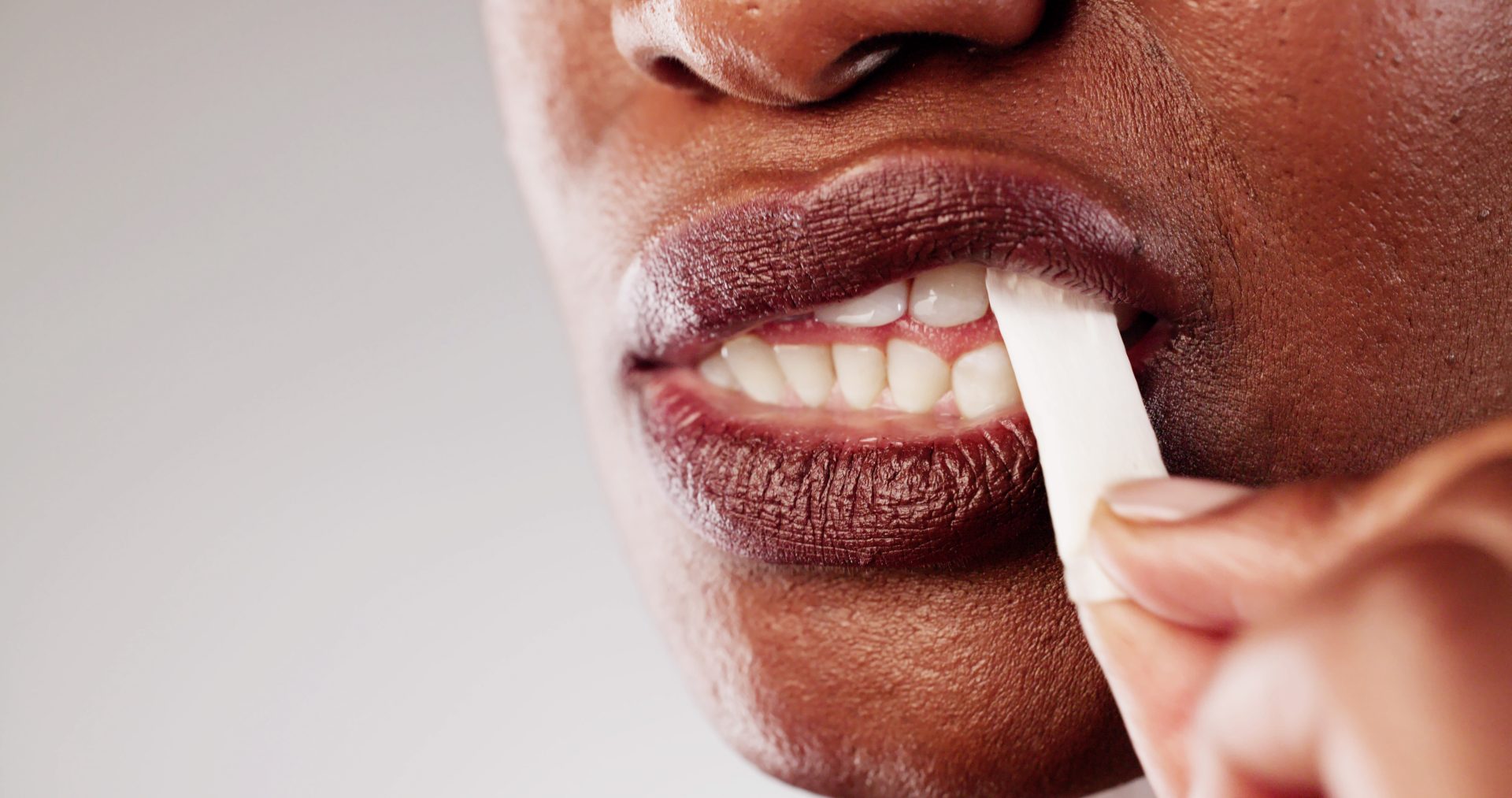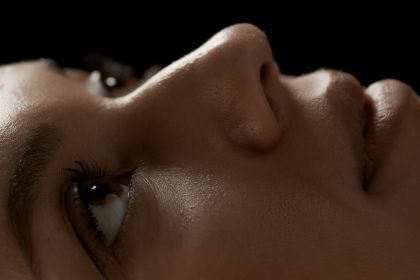The conversation about facial aging typically focuses on sun exposure, genetics, and skincare routines, while overlooking a fundamental daily activity—chewing. This repetitive action, performed thousands of times daily, significantly influences facial muscle tone, bone density, circulation, and tissue support. Modern dietary and behavioral changes have drastically altered human chewing patterns from our evolutionary past, potentially accelerating certain aspects of facial aging. Understanding this overlooked connection reveals both how facial structures change over time and provides practical strategies to maintain facial integrity through more conscious chewing habits.
The evolutionary mismatch in modern diets
Human facial structures evolved in environments requiring substantial chewing effort, with prehistoric diets consisting of fibrous plants, tough meats, and unprocessed foods demanding significant masticatory force. This consistent, vigorous chewing activity stimulated bone growth, maintained muscle tone, and supported optimal facial development. Today’s highly processed, soft-textured diets require fraction of this chewing effort, creating an evolutionary mismatch between our facial structures and the mechanical stimulation they receive.
This reduction in chewing demand has several direct consequences for facial aging. First, facial muscles experience significantly less activation, gradually leading to decreased tone and definition. Second, the periodic pressure against facial bones that signals bone maintenance becomes diminished, potentially accelerating age-related bone resorption. Finally, the natural lymphatic pumping action created during vigorous chewing decreases, reducing one mechanism that helps eliminate waste products from facial tissues.
The most visibly affected areas include the masseter muscles along the jawline, the buccinator muscles in the cheeks, and the temporal muscles at the temples—all of which contribute significantly to facial contour and support. As these muscles receive less stimulation, their gradual atrophy contributes to the sagging and flattening commonly associated with aging faces.
Bone density changes from insufficient pressure
Facial bones, like all skeletal structures, follow the biological principle that mechanical loading stimulates bone maintenance while lack of stress triggers resorption. The jawbone (mandible) proves particularly responsive to chewing forces, with regular pressure signaling osteoblasts to maintain bone density. When chewing forces diminish through soft diets or reduced chewing duration, this maintenance signal decreases, potentially accelerating the natural bone loss that occurs with aging.
This bone density reduction creates several cascading effects on facial appearance. As the mandible gradually loses volume, particularly at the angle of the jaw and the alveolar ridge supporting teeth, the lower face loses structural support. This contributes to the characteristically aged appearance of a less defined jawline, decreased chin projection, and reduced lower facial height. The maxilla (upper jaw) experiences similar changes, leading to less prominent cheekbones and decreased mid-face support.
Particularly concerning is how these bone density changes interact with gravity and skin laxity over time. As facial bone volume decreases, the skin and soft tissues that once stretched over fuller structures now have less scaffolding for support. This creates the characteristic sagging seen in aging faces, which proves difficult to address through surface-level treatments alone since the underlying structural changes drive the visible aging signs.
Muscle tone implications for facial contour
The face contains over 40 muscles specifically devoted to expression and chewing, most of which require regular activation to maintain optimal tone. The primary chewing muscles—the masseters along the jawline and the temporalis at the temples—significantly influence facial contour and respond dramatically to usage patterns. With insufficient chewing stimulation, these muscles gradually atrophy, losing both volume and tone that previously contributed to facial definition.
This muscle tone reduction affects facial appearance in several distinct ways. Most visibly, the jawline loses definition as masseter muscles decrease in size and tone, creating the softer, less angular lower face often associated with aging. The buccinator muscles in the cheeks, which help manage food during chewing, similarly decrease in tone with reduced usage, contributing to the flattened or hollowed cheek appearance common in older faces.
Furthermore, decreased muscle activity reduces circulatory stimulation throughout facial tissues. This diminished blood flow means less oxygen and nutrient delivery to skin cells and reduced waste product removal, potentially accelerating other aging processes. The cumulative effect creates a feedback loop where reduced muscle activity leads to poorer tissue health, which further compromises facial appearance beyond the direct structural changes from muscle atrophy.
Temporomandibular joint changes and aging
The temporomandibular joint (TMJ)—the connection between jawbone and skull—undergoes significant changes based on chewing patterns that influence overall facial aging. This complex hinge-and-sliding joint depends on balanced, regular movement to maintain proper alignment, synovial fluid production, and cartilage health. Insufficient chewing can lead to reduced joint mobility and compromised function, while certain chewing patterns may create excessive wear on joint structures.
As TMJ function changes with age and use patterns, several facial aging effects may accelerate. Decreased joint space can reduce lower facial height, contributing to the collapsed appearance often seen in aging faces. Uneven joint wear frequently leads to subtle facial asymmetry that progresses over time, with one side of the face aging differently than the other based on dominant chewing patterns.
Perhaps most significantly, TMJ dysfunction often leads to compensation patterns in other facial muscles, particularly those involved in expression. These altered movement patterns can create persistent tension in areas like the forehead and around the eyes, potentially contributing to premature wrinkle formation in these regions. This highlights how localized changes in one facial structure can create cascading effects throughout the entire facial aging process.
Skin elasticity effects from mechanical stimulation
Facial skin health depends partly on mechanical stimulation that chewing naturally provides, influencing both elastin production and collagen maintenance. During chewing, the skin experiences gentle stretching and movement that signals fibroblasts—the cells responsible for producing structural proteins—to maintain optimal activity. Without this regular stimulation, these cells may become less productive, potentially accelerating the natural decline in collagen and elastin that occurs with aging.
The mechanical effects extend to the extracellular matrix—the structural framework supporting skin cells—which depends on regular movement to maintain optimal organization. This matrix responds to mechanical forces by reinforcing its structure, similar to how exercise strengthens muscles. With insufficient stimulation through reduced chewing, this matrix may become less organized and supportive over time, contributing to skin laxity beyond what would occur from intrinsic aging alone.
Additionally, the rhythmic pressure changes created during chewing influence interstitial fluid movement within facial tissues, supporting optimal hydration and waste removal. This subtle pumping action helps maintain the healthy extracellular environment necessary for optimal skin function. When chewing becomes minimal or restricted to limited patterns, this beneficial fluid exchange may diminish, potentially contributing to the decreased skin vitality often observed in aging faces.
Uneven chewing patterns and facial asymmetry
Most people develop dominant chewing patterns, favoring one side of the mouth for the majority of masticatory function. Over decades, this uneven usage creates progressive facial asymmetry that becomes increasingly apparent with age. The preferred chewing side typically develops stronger musculature, better bone density, and different fat pad distribution compared to the less-used side, creating structural differences that manifest visibly as aging progresses.
This asymmetrical development becomes particularly noticeable in three key areas. First, the jawline often appears more defined on the dominant chewing side due to greater masseter development and bone maintenance. Second, the cheek area may show different contours, with the dominant side maintaining better volume and support. Third, the nasolabial fold (the line running from nose to mouth corner) frequently deepens more rapidly on the non-dominant side due to decreased tissue support.
As general facial volume diminishes with age, these asymmetries often become more pronounced rather than less visible. What might appear as minor differences in younger years can evolve into more noticeable imbalances over time, contributing to an aged appearance. This progressive asymmetry illustrates how cumulative effects of habitual movements can significantly influence facial aging patterns beyond genetic factors alone.
Stress-related clenching and grinding effects
Modern lifestyle stressors frequently manifest through increased jaw tension, clenching, and nocturnal grinding (bruxism), each affecting facial aging through distinct mechanisms. Chronic clenching creates persistent hypertonicity in masticatory muscles, particularly the masseter and temporalis, eventually leading to muscle enlargement that can create a squared jawline in severe cases. While this might temporarily increase lower face definition, the associated tension often creates cascading effects throughout the facial structure.
The excessive forces generated during grinding and clenching transmit beyond the immediate jaw area, frequently creating tension patterns in connected facial regions. This persistent tension can contribute to accelerated wrinkle formation, particularly in the forehead, between brows, and around the mouth. Additionally, the sustained pressure during clenching episodes restricts healthy blood flow to facial tissues, potentially compromising cellular health and accelerating aging processes.
Perhaps most significantly, severe grinding creates excessive wear on tooth surfaces, gradually decreasing their height and subsequently reducing the vertical dimension of the lower face. This collapsed vertical dimension creates several aging characteristics: deeper nasolabial folds, more prominent marionette lines from mouth corners to chin, and increased likelihood of turned-down mouth corners. These changes can add years to perceived facial age beyond what would occur through intrinsic aging alone.
Swallowing patterns and neck appearance
The connection between chewing habits and neck appearance highlights how integrated facial aging truly is. Proper chewing naturally leads to optimal swallowing patterns that engage the suprahyoid muscles running from the jaw to the hyoid bone in the neck. These muscles help maintain definition in the submandibular region—the area under the chin and along the upper neck—which significantly influences perceived facial age.
When chewing becomes minimal or hurried, swallowing patterns often shift toward greater tongue thrust and less suprahyoid muscle engagement. Over time, this altered pattern contributes to decreased tone in the muscles supporting the floor of the mouth and upper neck. The resulting tissue laxity contributes to the formation of “turkey neck” or submental fullness—hallmarks of an aging appearance that prove difficult to address without correcting the underlying functional patterns.
This connection explains why some individuals maintain remarkably better neck definition despite advancing age, often corresponding with maintained chewing efficiency and optimal swallowing mechanics. The distinction highlights how functional patterns directly influence structural aging, providing opportunities for preventive approaches focused on optimizing these daily functions rather than merely addressing surface-level changes.
8 effective strategies to optimize chewing for facial benefits
- Incorporate strategic food texture diversity into daily eating habits to ensure facial muscles receive varied stimulation. Include foods requiring substantial chewing effort—raw vegetables, fibrous fruits, tough protein sources—at least twice daily. This approach doesn’t require completely changing your diet but rather intentionally incorporating challenging textures alongside preferred foods. For example, begin meals with raw vegetables that require significant chewing before moving to softer components, ensuring masticatory muscles receive adequate activation daily.
- Practice conscious mastication techniques by periodically counting chewing cycles to reset habitual patterns. Most people chew soft modern foods only 3-5 times before swallowing, providing minimal muscular stimulation. Intentionally increasing to 15-20 chews per mouthful during at least one daily meal dramatically increases cumulative facial muscle activation. This deliberate practice gradually retrains unconscious eating patterns while providing immediate benefits through increased blood flow and lymphatic activity in facial tissues.
- Implement chewing symmetry training to address imbalanced facial development. Identify your dominant chewing side through self-observation or dental feedback, then practice directing food to the non-dominant side for a portion of each meal. Place a small sticky note on your non-dominant side as a reminder until the balanced pattern becomes habitual. Additionally, alternate starting sides with each meal, as most people naturally begin chewing on their dominant side and continue that pattern throughout the meal.
- Utilize resistance chewing tools specifically designed to provide supplemental masticatory exercise. Several dental-approved options offer calibrated resistance that safely increases muscle activation beyond what typical foods provide. These tools, used for 5-10 minutes daily, effectively maintain facial muscle tone and jawline definition without requiring dietary changes. Look for options with progressive resistance levels that can be adjusted as muscle strength improves over time.
- Optimize tongue posture throughout the day to support proper facial structure and neck appearance. The tongue should ideally rest against the roof of the mouth with the tip positioned behind the upper front teeth. This positioning supports proper swallowing mechanics and engages the muscles that maintain definition along the jawline and upper neck. Practice proper positioning for several minutes daily until it becomes the default resting position, creating cumulative benefits for facial support structures.
- Address nocturnal grinding through proactive interventions that protect facial structures. If morning jaw tension, headaches, or visible tooth wear suggest nighttime grinding, consult dental professionals about protective appliances to prevent structural damage. Additionally, implement pre-sleep relaxation practices targeting the jaw area, including gentle massage along the masseter muscles and progressive relaxation techniques focusing specifically on releasing tension in the jaw, temples, and forehead.
- Incorporate facial resistance training to complement chewing activity for comprehensive muscle maintenance. Multiple evidence-based facial exercise systems target the muscles most affected by aging, creating measurable improvements in facial appearance. These exercises, performed consistently for 10-15 minutes daily, maintain muscle tone that supports skin positioning and counteracts the gravitational effects accelerating visual aging. Focus particularly on exercises that target the mid-face and neck regions most affected by decreased chewing stimulation.
- Maintain proper hydration status to optimize the benefits of increased chewing activity. Well-hydrated facial tissues respond more effectively to mechanical stimulation, showing greater improvements in circulation and lymphatic function. Proper fluid intake supports the production of saliva, which itself provides beneficial effects for oral health and digestion. Aim for water consumption that produces consistently pale urine, adjusting for activity level and climate conditions.
The connection between chewing habits and facial aging reveals how functional activities shape structural development throughout life. By understanding these relationships, we gain practical approaches to maintaining facial integrity that complement traditional anti-aging strategies focused on skincare and aesthetic treatments. The benefits extend beyond appearance to include improved digestion, reduced tension patterns, and potentially even cognitive benefits from increased cerebral blood flow during vigorous chewing. This integrated approach recognizes that the most effective anti-aging strategies work with the body’s natural physiological processes rather than attempting to override them through isolated interventions.














